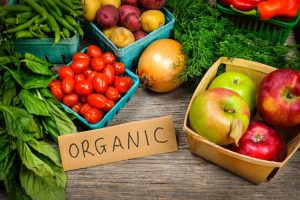Technological Innovations in vegetable and fruit trade
The role of technology in improving the efficiency and traceability of the vegetable and fruit trade.
Introduction
The global vegetable and fruit trade form an essential component of the food industry, catering to the ever-increasing demand for fresh and high-quality produce. However, this sector is not without its challenges, ranging from issues related to efficiency and quality control to the crucial aspect of traceability. Fortunately, technological innovations have emerged as potent tools in tackling these challenges head-on and, in the process, revolutionizing how fruits and vegetables are cultivated, transported, and marketed. This article delves into the pivotal role of technology in elevating the efficiency and traceability of the vegetable and fruit trade.

Precision Agriculture
One of the most transformative technological advancements within the agriculture sector is precision agriculture. This approach leverages a spectrum of technologies, including GPS, sensors, and drones, to optimize farming practices. In the context of the vegetable and fruit trade, precision agriculture serves as a game-changer, empowering farmers to monitor crop health, optimize irrigation, and minimize the use of pesticides and fertilizers. This not only leads to enhanced produce quality but also drives down production costs.
Precision agriculture relies heavily on real-time data and the integration of technologies like Geographic Information Systems (GIS) and Remote Sensing (RS). These tools enable farmers to make data-driven decisions about planting, harvesting, and resource allocation, contributing to increased yields and sustainability.
IoT and Smart Farming
The advent of the Internet of Things (IoT) has ushered in the era of smart farming, a paradigm where sensors and connected devices work in unison to collect real-time data on various facets of agriculture. For the vegetable and fruit trade, this means continuous monitoring of soil conditions, weather patterns, and crop growth. The data thus acquired is subjected to rigorous analysis, facilitating informed decisions regarding planting schedules, harvesting times, and resource allocation. Smart farming optimizes agricultural operations, ensuring a consistent supply of high-quality fruits and vegetables.
The IoT ecosystem in smart farming encompasses a wide array of devices, including soil moisture sensors, weather stations, and even autonomous farming equipment. These devices are interconnected, communicating data to centralized systems that offer insights, suggest actions, and support decision-making processes. The result is not just efficiency but also sustainability, as resources are utilized judiciously.
Supply Chain Management
The integration of technology has wrought profound changes in the realm of supply chain management for fruits and vegetables. Blockchain technology, in particular, has emerged as a robust solution to challenges related to transparency, traceability, and food safety.
Blockchain, essentially a decentralized and tamper-proof ledger, is employed to record the journey of produce from farm to table. Every transaction, be it the planting of seeds, transportation, or quality control measures, is securely documented in a transparent and immutable manner. This ensures that food safety standards are rigorously upheld, and the risk of contamination is substantially mitigated.
The application of blockchain in supply chain management also holds the promise of fairer and more equitable trade practices. By recording every step in the supply chain, it becomes possible to trace the origin of each fruit or vegetable, guaranteeing fair compensation for farmers and fostering trust among consumers.
Data Analytics and Predictive Modeling
Data analytics and predictive modeling are indispensable tools for forecasting demand and optimizing supply chains within the vegetable and fruit trade. By analyzing historical data and monitoring market trends, stakeholders can make informed, data-driven decisions concerning planting schedules, transportation routes, and inventory management.
Predictive modeling leverages the power of algorithms and artificial intelligence to anticipate market fluctuations and consumer preferences. This knowledge enables growers and distributors to adjust their operations, reducing waste and ensuring that consumers consistently have access to fresh produce.
The implementation of data analytics and predictive modeling is not limited to just one aspect of the supply chain. It extends from pre-planting decisions, such as crop selection and planting schedules, through post-harvest considerations like storage, packaging, and transportation. In essence, it is a holistic approach that optimizes the entire journey of fruits and vegetables from farm to consumer.
Cold Chain Technology
Maintaining the freshness and quality of fruits and vegetables during transportation is a formidable challenge. Here, cold chain technology emerges as a critical solution. It encompasses a range of refrigeration and temperature monitoring systems that ensure produce remains at the optimal temperature throughout its journey.
Cold chain technology begins at the farm, where produce is promptly chilled to preserve its quality. It continues through transportation, warehousing, and distribution, with real-time temperature monitoring to ensure that the cold chain remains unbroken. This technology significantly extends the shelf life of fruits and vegetables, reduces spoilage, and minimizes food waste.
The benefits of cold chain technology are not confined to the realm of quality preservation alone; it also impacts food safety. Maintaining a consistent, controlled temperature is essential in preventing the growth of harmful pathogens and ensuring that consumers receive safe and wholesome produce.
E-commerce and Online Marketplaces
The rise of e-commerce platforms and online marketplaces has disrupted traditional models of buying and selling fruits and vegetables. Consumers now have the convenience of ordering fresh produce directly from farmers or retailers, often with the option of same-day delivery. This shift not only enhances convenience for consumers but also opens up new markets and revenue streams for growers.
E-commerce platforms are powered by advanced technologies, including user-friendly apps and websites, secure payment gateways, and sophisticated inventory management systems. These platforms provide consumers with a diverse range of options and facilitate efficient tracking of orders.
For farmers, e-commerce platforms offer a direct channel to reach consumers, eliminating intermediaries and associated costs. This fosters a more transparent and equitable relationship between producers and consumers, while also allowing farmers to diversify their customer base.
Conclusion
Technology has emerged as a transformative force in the vegetable and fruit trade, addressing longstanding challenges related to efficiency, quality control, and traceability. From precision agriculture and smart farming to blockchain-enabled supply chain management, data analytics, and cold chain technology, these innovations have revolutionized how fruits and vegetables are grown, transported, and marketed.
As global demand for fresh and high-quality produce continues to rise, technological advancements will remain pivotal in meeting these demands while simultaneously ensuring food safety and sustainability in the industry. In a world that increasingly values transparency and efficiency, the vegetable and fruit trade stands to benefit immensely from ongoing technological innovation.
Rad Golden Leaf General Trading LLC is a reputable company specializing in the export of fruits and vegetables, adhering to international trade principles. Additionally, the company is involved in the import of raw tobacco materials. Their strong commitment to quality and compliance with industry standards has established them as a trusted player in the global agricultural and tobacco supply chain. Their dedication to excellence ensures that customers receive top-notch products and services in both the export and import sectors.
